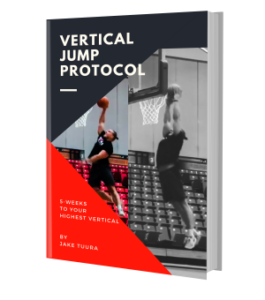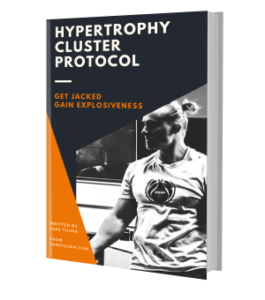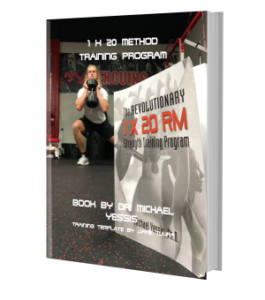https://podcasts.apple.com/us/podcast/jacked-athlete-podcast/id1462537296?i=1000705054319
“At the time, all the information out there was the way you dealt with jumper’s knee pain, the consensus was, Don’t let your knees go past your toes, because that’s going to irritate it. Rest. Ice them. No direct quad training.”
Tendon pain: “It gets better and then it gets worse. And then you do something and it gets worse. You’re like, wait, why did that hurt? I don’t understand. Let me stretch and foam roll more. And then like you get an analgesic effect from just like kind of doing like stuff passive stuff. And then you go right back to doing a thing and then it’s fucking hurt again. And it’s way worse than it’s ever been. So you stop doing everything for a while. Then you come back and you’re like, I’m good. But you’re wrong. You’re not good because you’re weaker.”
“The worse it got, the more I avoided loading my quads and bending my knees. The more I avoided loading my quads and bending my knees, the worse it got.”
“The first few years of dealing with jumper’s knee pain, it would get to the point I couldn’t even walk up and down stairs without fucking limping. It was bad.”
“Jumper’s knee is not jumper’s knee, it’s decelerator’s knee… it’s not the concentric portion of a movement that flares up the tendon. It’s the rapid deceleration or the rapid loading of that tendon and either like suddenly trying to stop or change direction, which are both kind of the same thing actually when you think about it.”
“You load up a shit ton of weight on someone’s back. The easiest, fastest way to adapt, to learn how to move that weight as quickly as possible, as fast as possible from A to B is to sit back into your hips, keep your weight into the heels. And most of these guys from high school on are coached to squat that way. There’s not nearly enough direct quad loading like these high schools, collegiate programs. There aren’t leg extensions in most of these weight rooms, right? Most of their squats are not being done in Olympic lifting shoes or heel wedges. That is changing. I’m seeing more of that. But for the most part, you’re ending up with this super hinge, quote unquote, hip dominant. And why? Because every fucking strength coach who has their CSCS, who’s, who’s mentor went before them said, power comes from your hips. You got to load the hips. Cause that’s where the power comes from. And they’re not wrong. But if you develop these powerful, robust hips and you’ve never fucking directly train your quads, and then you go out onto the field and you try and stop, start and change direction suddenly. You’re going to get jumper’s knee dude. Like that’s what’s it. That is what happens.”
“When someone has jumper’s knee, most of the time, you can say, how strong are your quads? Or show me a squat. I watch them squat, and maybe it looks good with the light weight, but the second it starts getting anywhere near challenging, they’re not fucking using their quads. They’re not bending their knees. They’re bending their hips. And even, I’ll say, okay, I see what’s going on here. Let me get you on a hack squat. What’s the first thing they do? They don’t put their feet low and underneath their hips. They put their feet high and wide as possible so they can avoid bending their knees.”
“I’ll get, you know, guys who can technically squat five, 600 pounds, not fucking kidding. Put them on a leg extension with 50 pounds and by rep 12, they’re fucking quivering, shaking. It’s, and they’re miserable.”
“I became more aware of like what kinds of plyos and jumps were more likely to really piss a tendon off. So like, you know, doing a, doing like really high hurdle hops, you know, and for a period of time, not a great idea. Doing ⁓ skips for height as high as I possibly could with my, my tendons already cranky, not a great idea. Whereas slower jumps, I could do a depth jump, but a drop jump could be a problem, right? So like these, where I have those like almost shallower knee angles where I’m trying to reverse and there’s just more velocity and there’s what I would assume to be a much more intense demand on the tendon to load eccentrically because the muscles aren’t moving as much, the joint isn’t moving as much. Those were typically the things that really pissed me off. So I had to live in that slower ground contact, a lot of two foot jumping, not a lot of single leg stuff. Like it took me a while to get to a place where I could single leg hop or single leg bound and add velocity without having issues.”
“I’ve never ever pissed off a jumper’s knee from a landing from my jump.”
“You’re not landing the way you took off… You’re usually landing like one foot than the other foot and your entire body is folding and crumbling and you’re dissipating the force differently. So it’s like comparing apples to oranges.”
ATG Split Squat: “While you’re getting a lot of range of motion and flexion at the knee, if you really look at it side by side, just look at the joint and the way the quad is interacting with the knee joint. Is that any more close of an angle than a really deep hack squat? No, knee can only bend so much.”
ATG Split Squat: “How much can you actually load up that movement relative to something like a hack squat or a leg press or a leg extension? And because of the nature of that movement, you’re starting basically in your heel and your center of mass is here, heel here. And then the knee drops forward and your center of mass shifts. So you’re only really loading that tissue at the most deepest end range of that position and then you’re back out. So it does a poor job of loading. The strength curve is dog shit. And there are other ways to get that same amount of knee bend reliably consistently with more balance. Dog shit movement.”
Poliquin Step Up: “Exact same principle. A lot of tendon load, not a lot of muscular load. Very short range of motion, incredibly hard to load up. Is there any stability for you to really send it and drive intent? Absolutely fucking not. Get it out of here.”
Reverse sled drags: “Here’s the redeeming one. If you’re someone whose knee pain is bad, you know what I mean? And you’re just looking for an option, a very low, it’s a wonderful rehab exercise. It can do a great job of just getting blood into the quads and being this really sort of like, basically essentially dipping your toe into the water to be able to like get some relief from knee pain and just get blood going and just like, you know, get movement into the joint. However, long term, like there’s a, there’s an expiration date on that movement and its ability to move the needle, particularly if the number one thing that’s going to likely improve your jumper’s knee pain is quad strength.”
Reverse Sled Drags: “Here’s the other thing. There’s no eccentric loading. There’s no eccentric loading on the portion, which by the way, when you’re experiencing jumper’s knee is the most important quality to training, right? Because it’s the eccentric portion of the movement that’s going to cause you trouble. That eccentric loading portion of the movement is incredibly important.”
ATG for knee pain: “If you’re someone who’s weak as shit and you’re not an athlete, those things are enough for you to be fit and work out and get out of knee pain, great. But when you’re talking about real athleticism, people who are moving and changing directions, who are big, fast and strong, those things are a drop in the ocean. If you’ve got kitten knees and you need kitten solutions, cool.”
“That’s the pattern people get caught, you do just enough to feel better… Pick any exercise, get a fucking nasty pump in your quads. Your knees are gonna feel better right then and there, period… And so the leap you make in your brain is like, it feels better, therefore it’s working, therefore this is a good exercise. But the problem becomes is because you’re never actually doing anything to progressively strengthen that joint, that tissue over a long period of time, you’re like a fucking buoy in the middle of a storm in an ocean. And sometimes the storm comes down and you’re like, ⁓ okay, things are gonna get better. Fucking wrong, because inevitably, it’s going to flare up again. And that’s just, you know, I wish that wasn’t the case. I wish that just like doing just enough to feel better, stretching, foam rolling, getting a nice pump in the quads was enough to effectively eliminate jumper’s knee pain long-term. It’s just not. And really my experience has been is it doesn’t matter what tendon it is. If you’ve gotten at, no matter if it’s Achilles, your shoulder, it’s quad tendon, patellar tendon, once a certain line is crossed and it’s gotten to a place of irritation or, you know, there’s structurally, there’s been some damage, it’s been compromised. Once that line is crossed, just doing enough to feel better is not going to likely be enough to get better.”
“[Outside of leg extension], the other exercise that I actually think is equally, if not more impactful. If it’s done regularly, consistently and close enough to failure. Okay. The sissy squat.”
Foam roller bridge: “What you’ll notice is like if people are consistent with it, they’ll stop cramping on that side. They’ll report that their knee feels better. You’ll notice that they have a tendency to actually start bending that knee more in movement, assuming that they’re also doing things in the gym that encourage them to move through flexion and build quad strength.”
Rehabbing in-season: “Your ability to improve by this is going to be directly correlated almost always to how much you can eliminate the thing that makes it hurt the most.”
“Here’s the thing with football players, culturally speaking, the pain’s not a problem, fuck it. They hate it, they don’t want it, but culturally in football, unless there’s meat hanging off the bone or you have dislocated a joint, you’re fucking playing… Whereas culturally speaking, like volleyball and like basketball, it’s like a little more, you know, they’re a little more sensitive. They just are, you know, they’re not tackling each other at full speed, you know, and getting dog cursed.”
“There’s a level of intensity and suck that you should feel in your quad regardless of the movement. And if you’re not doing that, if you’re not feeling that, you’re doing it wrong. This is something bodybuilding gets right all the time that sports performance still shits the bed on all the time… So bodybuilders inherently understand how you perform a movement impacts the tissue you’re trying to train. And it’s like you say that, it’s like no shit. But in the sports performance world, don’t really like, at the highest levels, it’s like we don’t really think about that. It’s just like you’re deadlifting it, pick it up off the floor, it up, period. Successful lifts, great job. That was a lot of weight. You moved it fast, you made the thing go ding.”
Tim’s Website: https://www.timrileytraining.com
Tim’s Instagram: https://www.instagram.com/timrileytraining/?hl=en
Coach Em Up Instagram: https://www.instagram.com/coachemuppodcast/?hl=en



